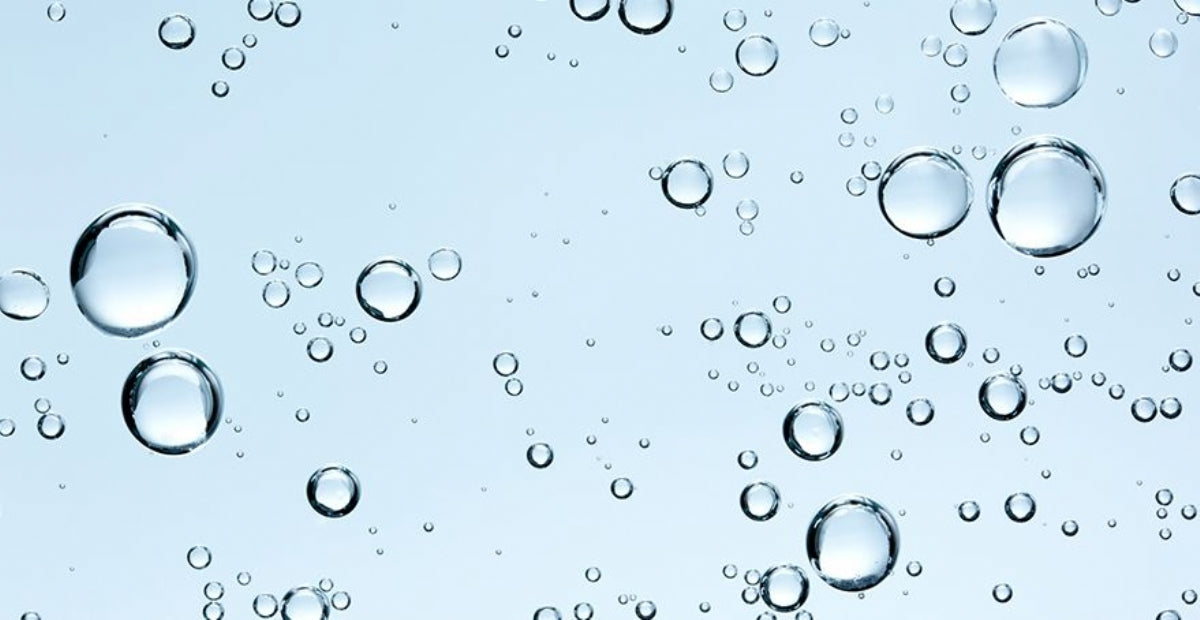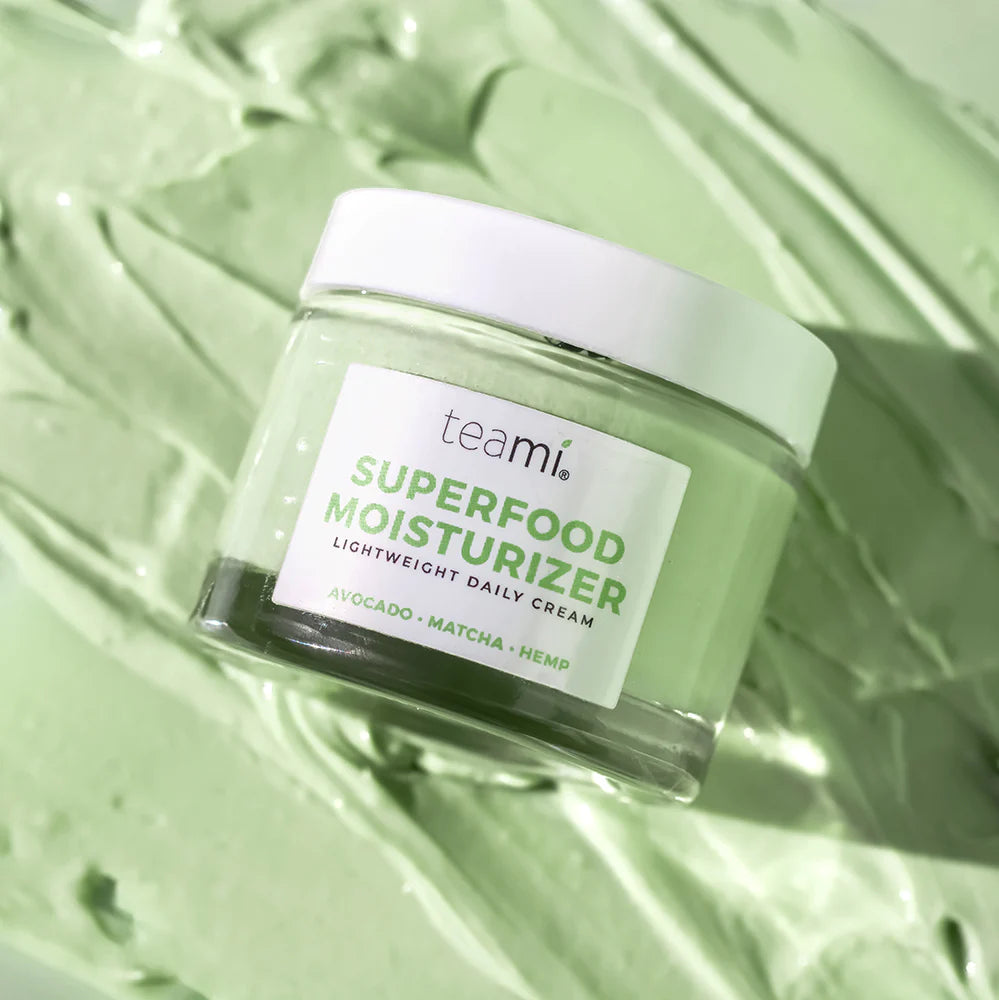Hyaluronic Acid Benefits Include Moisturizing and Reducing Signs of Aging

Ingredients like collagen, retinol, and salicylic acid have been skincare mainstays for many years, but recently a new ingredient has joined their ranks: hyaluronic acid. Hyaluronic acid benefits, which include anti-aging properties and an incredible ability to make your skin soft and supple, have turned this ingredient into a star in its own right.
Today we’re going to take a closer look at why this ingredient is making such a splash. Read on to find out why hyaluronic acid is so great for skin, if it’s right for you, and how you can benefit by incorporating it into your skincare routine.
What Is Hyaluronic Acid?
Hyaluronic acid is a glycosaminoglycan, which is a hard-to-pronounce name for a naturally occurring substance that helps keep skin looking young. Glycosaminoglycans are vital when it comes to anti-aging, but hyaluronic acid is a crucial molecule in skin aging.
A transparent, gooey substance that helps safeguard and renew the skin, its main function is to retain water to keep the tissues in our body lubricated and moist. Hyaluronic acid is a humectant; that is to say, it pulls moisture out of its surroundings and boosts hydration. Hyaluronic acid is renowned for being able to hold up to 1000 times its weight in moisture!
Unfortunately, stores of hyaluronic acid steadily begin to drop as we get older. Around age 40, hyaluronic acid levels drop significantly, which causes thinner and drier skin, atrophy, and wrinkles and fine lines.
Benefits of Hyaluronic Acid for Skin
Don’t let its name fool you. Hyaluronic acid isn’t a traditional acid like the ones used for exfoliation that strip the skin and causes redness. It’s much milder than these conventional acids. Hyaluronic acid, which is also known as hydraulic acid, benefits the skin in many powerful, yet gentle ways.
Moisturizing Benefits
You might have already guessed that this ingredient has insane moisturizing benefits. Hyaluronic acid benefits the skin by improving the skin’s hydration levels. As we mentioned above, it pulls moisture from its surroundings and helps keep the water in your skin instead of letting it evaporate.
If you live in a humid region, hyaluronic acid helps to draw water from the air into your skin. It’s also a miracle product for people who suffer from dehydrated skin.
Look for it as an ingredient in skincare products to add to your regimen. One popular example that contains it is Hibiscus-Infused Vitamin C Serum. This product is infused with hibiscus, Vitamin C and hyaluronic acid, and has shown to brighten, tighten and all-around purify the skin.
Anti-Aging Benefits
Hyaluronic acid benefits for face health have been proven, as well. It doesn’t erase wrinkles, but the added moisture plumps up the skin, reducing the appearance of those lines and giving a smoother look.
Radiance Benefits
Topical hyaluronic acid treatments can also help promote regeneration of the skin, and help it heal from conditions like redness and dermatitis--all of which translates to a smoother, more radiant complexion.
Hyaluronic Acid Health Benefits
Aside from using hyaluronic acid for face benefits like maintaining a youthful appearance, hyaluronic acid has many health benefits. It’s been shown to relieve joint pain, preserve bone strength, alleviate the symptoms of dry eye, and speed wound healing.
What Skin Types Are Best Suited to Hyaluronic Acid?
What makes this ingredient so fantastic is that anyone and everyone can use it, regardless of age or skin type. Hyaluronic serum benefits all kinds of skin, and the results are relatively immediate.
It’s effective at improving even more challenging to manage types like acne-prone skin and those suffering from rosacea. Hyaluronic acid is also great for oily skin, as it’s quite light and you can use it along with other products in your skincare routine.
Are There Any Risks Associated with Hyaluronic Acid?
Since the body naturally produces hyaluronic acid, allergic reactions are uncommon. It has few side effects, and for most people, it is generally very safe to use.
There are two groups of people who should avoid hyaluronic acid, however. Cancer patients are recommended to steer clear of it because some evidence shows that cancer cells are sensitive to hyaluronic acid, and supplements might make them grow faster.
Pregnant women should avoid it as well. The effects of hyaluronic acid on pregnant and breastfeeding women are not well understood; they haven’t been proven to be positive or negative, so it’s best to avoid this ingredient if you’re expecting or breastfeeding.

How to Use Hyaluronic Acid in Your Skin Care Routine
Using it correctly is the best way to maximize hyaluronic acid supplement benefits. It comes in cream, serum, and lotion form, and some people even opt to have it injected into fine lines and wrinkles (in the form of dermal fillers) for a more long-term solution.
Skincare is like going to the gym: as soon as you stop, you stop seeing the benefits. Hyaluronic acid serum benefits will be most significant when you’re consistent with your skincare regimen. You should apply it twice daily to see the results that we mentioned above.
It should be the last step in your routine before moisturizer, which you should of course top off with sunscreen as part of your daytime regimen. Many people find that hyaluronic acid makes a great makeup primer, too.
Dry Skin
If your skin is especially dry, you should apply this ingredient to damp skin to reap the most benefits. Applying hyaluronic acid to a dry face can actually cause more dryness because it pulls residual moisture from deep down in the skin to try to hydrate the outer layer.
The way to avoid this is by misting your face first or applying it to damp skin after a shower. Hyaluronic acid doesn’t have any water itself, so it works more effectively when combined with moisture.
Oily Skin
When it comes to oily skin, some people find that they don’t need both the hyaluronic acid and a moisturizer, just the hyaluronic acid.
Using Other Products with Hyaluronic Acid
You may be wondering if you can use other products in conjunction with hyaluronic acid, and the answer is that this ingredient pairs well with many others. For example, you can use hyaluronic acid with retinol because it’s light enough to still allow the retinol to penetrate the skin’s layers.

What Ingredients Should I Look For on the Label?
Now comes the important part: what qualities should you look for when purchasing? To take advantage of the benefits of hyaluronic acid, you should read the label to ensure that you’re getting the right stuff.
Loads of products contain minimal amounts of this ingredient, so check to make sure your product comprises at least 1 percent or higher of “hyaluronic acid” or “sodium hyaluronate.”
If you can’t find the exact percentage written somewhere on the packaging, you should check to make sure either of those names is high up on the list of ingredients. It should be listed either first or second, which means that the product is mostly made of these ingredients, ensuring that you get the proper concentration level.
Another way to reap hyaluronic acid benefits is by looking for products with occlusives. Occlusives slow the rate at which water dissipates from the skin, so be on the lookout for serums and moisturizers with lecithin, propylene glycol, cetyl alcohol, petrolatum, and paraffin.
What Are You Waiting For?
Hydrated skin looks fantastic on anyone, which is why hyaluronic is such an excellent way to give your skin a boost. We highly recommend putting this powerhouse ingredient in your skincare rotation with Teami’s Hibiscus-Infused Vitamin C Serum.
Subscribe to our Newsletter
Subscribe to our newsletter and get 10% off your first purchase
 Instagram
Instagram



